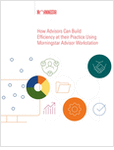The traditional American family—households made up of parents with children from those parents only—now represents only 20% of today’s population, and with each successive generation the percentage gets smaller. While some of us may like to look out at the world and imagine that cities like Mayberry and families like the Cleavers from “Leave It To Beaver” still exist, the reality is very different.
With wealth tending to be held disproportionately within the 20% of traditional families, I asked the CEO of a national financial services company what he would tell young advisors about prospecting since that 20% is already heavily targeted. Would he encourage them to pile on the bandwagon and continue to target families like the Cleavers or learn how to prospect families like that of Jay Pritchett from “Modern Family”? His reply: “Both.”
While most wealth may be concentrated in the 20%, it is increasingly spreading to the other 80%. Most people who sell a professional service are more comfortable selling it to people who are similar in their outlook, their attitudes and their family composition, but this limits opportunity. Below are some statistics reflecting today’s society and how advisors should interpret it:
In 2014, over 37% of women have a bachelor’s degree compared to under 31% of men.
The advisors I work with in my seminars and presentations are predominantly men. Most are baby boomers in their 50s. The Mayberry world was soon to end when they were born in the late ‘50s and early ‘60s, but it filled many of their formative memories. In that world, the father was the breadwinner and the family decision maker. That day is gone. Today, the woman is likely better educated and will have a greater say in all aspects of financial decisions. While she may defer to the man in a meeting, she’ll let her opinions be known when they’re alone and her opinions may outweigh his. In many cases, her education and earning power have made her the boss. Treat her gingerly. Treat her wisely. Treat her well.
In 2013, over 40% of births were to unmarried women.








 June 29, 2015 at 08:00 PM
June 29, 2015 at 08:00 PM










